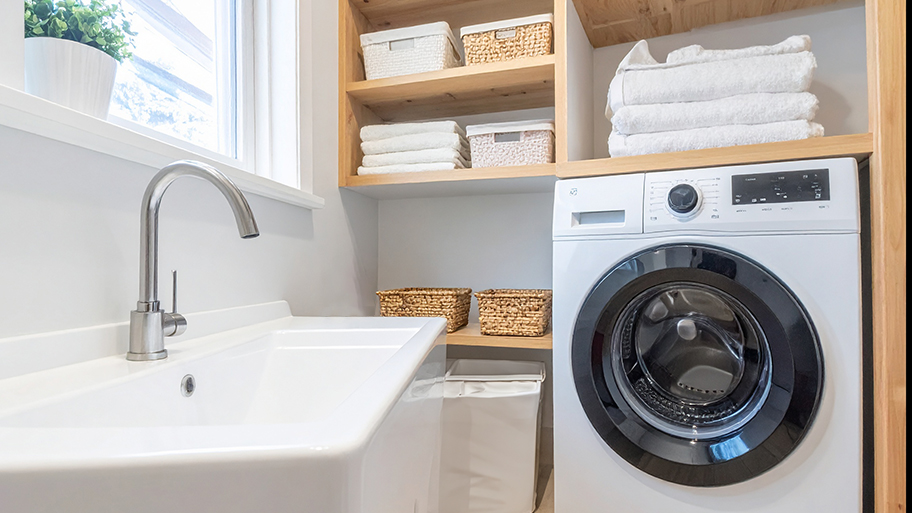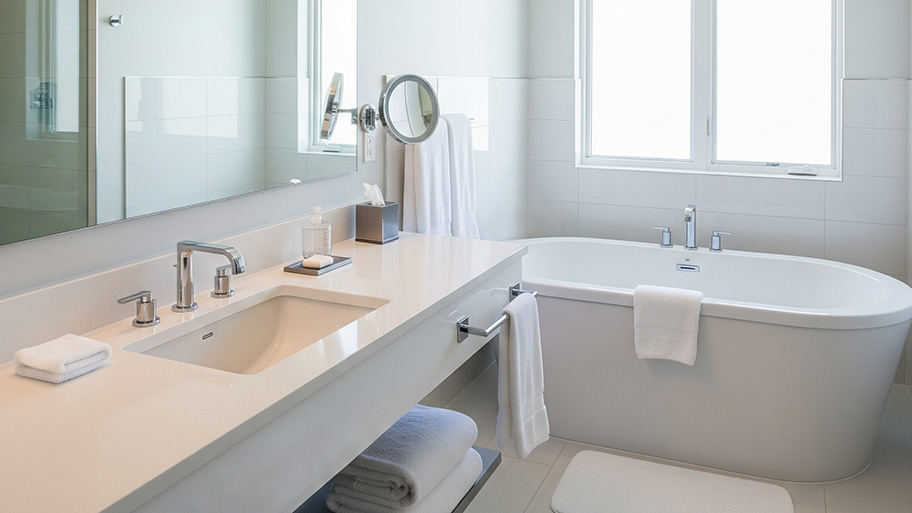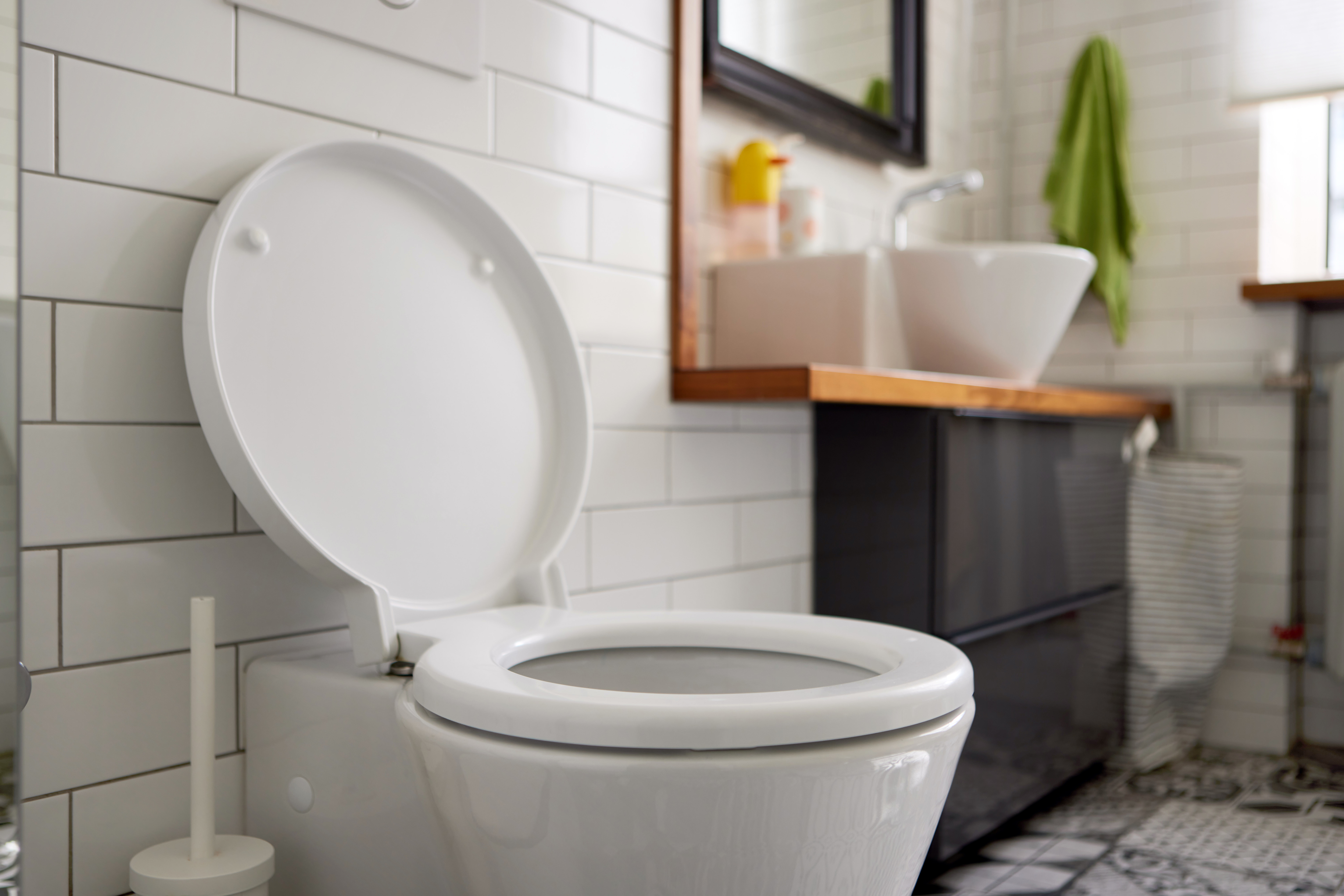
The costs for common plumbing issues are determined based on parts, labor, and expertise level. Read our guide to find out how much you should budget.
The average cost for rough-in plumbing for a bathroom is $6,500, depending on size and materials. Most spend between $3,000 and $20,000.


Rough-in plumbing refers to the initial installation of a home’s plumbing system before the walls, floors, and ceilings are completed.
This is a major plumbing job, and the cost will depend on the type of piping you need, the size of your home, the number of bathrooms, permits, and labor costs.
You’ll also need to account for the cost of fixtures like faucets, toilets, and sinks in the overall cost.
If you need to move a plumbing fixture three feet or more, it can cost $500 to $1,000.
The average cost to rough-in plumbing for a bathroom is $6,500. However, it can range from as low as $3,000 to as much as $20,000. The final price depends on the piping material, bathroom size, labor fees, number of fixtures, and more. Whether you’re constructing a new home from scratch or renovating your current one, you’ll need rough-in plumbing completed for a bathroom addition.
Considering rough-in plumbing costs at the beginning of your project can help you stay within your budget later on. This guide will help you make your dream bathroom a reality while accounting for project factors like labor and bathroom size.
Before you learn about the cost breakdown of rough-in plumbing, it would be beneficial to know exactly what it entails. Rough-in plumbing is the initial installation of a home’s plumbing system, including the water supply lines, drainage pipes, and vent pipes.
Rough-in plumbing comes in before the walls, floors, and ceiling, mainly because it’s much easier for the plumber to get into these spaces beforehand. Once all is said and done, these plumbing components are hidden from sight with the rest of the construction.
This step is important in the construction process because it sets the foundation for the whole plumbing system throughout your home. Just think about how much of your home uses plumbing—it’s everywhere! Without a solid (and correct) foundation, you could have serious plumbing problems in the future.
After installation, a building inspector takes a look to ensure the rough-in plumbing meets all local codes and regulations. After this, the drywall can go up to complete the walls and ceilings. The last step is installing accessories like toilets, sinks, and bathtubs.
Shaddai Plumbing team is great! They are very professional, they keep their word, they complete job without delays. Great quality. We had to replace old water pipes across 2-story home and their service was great. We asked to add additional water switches to be able to switch hot/cold water on and off in separate parts of home - and they did it. Now if it will be leak or other problem - we can switch off kitchen area, or second floor without impacting other parts of our home. Highly recommended!
Since this is a major plumbing job, you might be wondering what factors go into the variable costs. Factors like materials, labor, and home size all play an important role in the overall money you’ll be spending.
Each piping material has pros and cons at different price points. It’s common for homeowners to choose a different type of piping material when remodeling their homes, and the piping material factors into the total cost.
| Pipe Material for Rough-In Plumbing | Average Cost (Per Linear Foot) |
|---|---|
| Copper | $4–$12 |
| PEX | $1.50–$4 |
| CPVC | $1.50–$3.25 |
Copper piping is durable and resistant to corrosion and bacteria. It can last for 50 years on average, but with proper maintenance, it can last up to 80 years. The cost of using copper pipes for rough-in plumbing in your bathroom is about $4 to $12 per linear foot, including labor.
PEX piping is flexible and resistant to corrosion. It requires fewer connectors than copper and isn’t as vulnerable to freezing temperatures. You can expect to pay around $1.50 to $4 per linear foot for PEX piping, including labor.
CPVC piping is corrosion-resistant and can withstand high heat and water pressure. On average, homeowners pay $1.50 to $3.25 per linear foot for CPVC rough-in plumbing in their bathrooms.
Your local licensed and insured plumber is your go-to pro for rough-in plumbing for your bathroom. Hiring a plumber costs about $45 to $200 per hour, but the average range is $80 to $130 per hour. Depending on the plumber and the region in which you live, you can potentially pay an additional $50 to $300 in travel fees.
The size of your home will determine the distance between each bathroom and the piping material required for your plumbing lines. On average, you’ll pay more for a three-bathroom rough-in job in a 2,000-square-foot home with bathrooms on different sides of the building than for a job in a 1,250-square-foot home with bathrooms that share a wall.
The number of bathrooms you need rough-in plumbing for can impact your final price. Here are some cost estimates for rough-in plumbing by the number of bathrooms involved in the project:
| Number of Bathrooms | Average Cost of Rough-In Plumbing |
|---|---|
| 1 Bathroom | $1,600–$2,900 |
| 2 Bathrooms | $3,200–$5,800 |
| 3 Bathrooms | $4,800–$8,700 |
| 4 Bathrooms | $6,400–$11,600 |
If you need a permit to get the bones of your dream bathroom installed, it can cost about $30 to $500. At the bare minimum, a plumbing permit is required for large plumbing jobs based on state plumbing codes. In addition, you’ll need a special rough-in permit and final inspection permit. You might also need a water and sewer connection permit, but your plumber should be able to tell you precisely which permits are required.

The type of fixture you need rough-in plumbing for will influence this project’s actual cost.
As you might expect, the number of fixtures can drive up the cost of materials and labor. For example, rough-in plumbing for dual sinks and a walk-in shower in a primary bathroom will cost more than a half bath or a powder room.
| Fixture Type | Average Cost of Rough-In Plumbing |
|---|---|
| Faucet | $230–$480 |
| Double Faucet | $400–$600 |
| Toilet | $350–$3,500 |
| Sink | $300–$5,500 |
| Bidet | $1,500–$2,900 |
| Bathtub | $500–$2,750 |
| Shower | $1,500–$3,500 |
If you’re considering moving or replacing plumbing in a bathroom, several cost factors will affect the price. As a general rule, moving a plumbing fixture 3 or more feet can cost anywhere from $500 to $1,000, but speaking with a local plumber will give you the most accurate cost range. Your final cost to replumb a bathroom will depend on the fixtures, how far you need to move them, and if you need anything changed.
Sinks are the least expensive to move, so long as they stay on the same wall.
Toilets are the most costly to move, especially on the second floor of the home.
Bathtubs require the plumber to relocate the hot and cold water and drainage, making them expensive to move.
Showers are tricky to move because they involve moving the pipes in the wall and floor.
Additional cost factors for moving plumbing in a bathroom include permit costs, labor costs, materials, and disposal fees (if any).
There’s no denying that you can save money on labor fees by doing the rough-in plumbing for your bathrooms on your own. While most people love to save a few bucks wherever they can, this project requires skills, time, and a lot of extra know-how.
Even if you’re handy with tools, some homeowner’s insurance only covers work completed by a pro, not DIY jobs. Any water damage due to faulty pipe connections will have to come out of your pocket, which could be thousands more than the initial labor fees. Keeping this all in mind, unless you have extensive plumbing experience and expertise on building codes and inspection requirements, leaving a rough-in plumbing job to a licensed and insured plumber near you is best. Talking to at least three different plumbers in your area and asking for a quote will get you the best results.
From average costs to expert advice, get all the answers you need to get your job done.

The costs for common plumbing issues are determined based on parts, labor, and expertise level. Read our guide to find out how much you should budget.

Worried about water leaking around your toilet? You may have a faulty toilet flange. Learn more about the cost to replace a toilet flange in our guide.

The cost to add plumbing to a detached garage depends on several factors, including the type of plumbing and the garage's distance from your home.

Learning about the different parts of your bathtub plumbing system is useful when you need to repair or replace a component. This guide has all of the parts covered.

A clogged toilet can be embarrassing and even dangerous. Learn these tips to unclog a toilet, whether or not you have a plunger on hand.

Extend the life of your appliances by installing a water pressure regulator—here is why this valve is essential in your home.